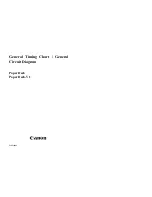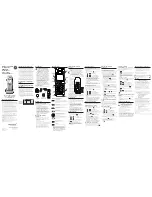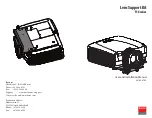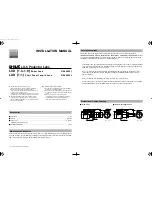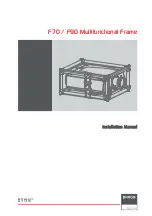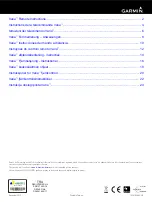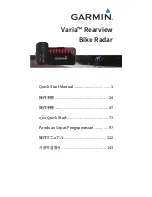
FAQ
What is a capacitor, how does it work ?
A capacitor is an electrical component which is composed of two plates separated by an electrical
insulation. This component could function in two modes, the charge and the discharge. The charge
occurs when there is a difference of potential across the conductors. It permit to store energy inside the
generated electric field. In general, this kind of component is used for blocking the direct current and for
letting pass the alternative one. They could be used to stabilize the voltage and the power flow in an
electric power transmission.
What is a hand crank generator:
A hand crank generator is an engine which is used as a generator. It turns a mechanical energy into an
electrical current. It is composed of three principal components which are the stator, the rotor and a
rotary handle. The user will turn the rotary handle which will make turn a magnet inside a coil. Due to
the rotation of the magnet, the electrical field turn and an electrical current will appear in the coil.
What will happen if I turn the hand crank handle in the wrong sense.
The hand crank generator could function in both senses as a lot of engine. The sense of rotation will
just impact the sense of the current which is generated. However, you should be careful with the
components which are connected to the generator. In fact, some components are polarized and they
couldn’t works in both sense.
What will happen if I connect the hand crank generator to the fan in the wrong sense?
Nothing bad, the fan is composed of a small engine which work in the same way than the generator but
in the other sense (it turns an electrical current into a mechanical motion). If you pug the generator
wires in the wrong sense, the fan will turn in the other sense than previously.
Do there is a special position to plug the generator to the potentiometer?
There is just one thing to know when you use a potentiometer, it should be wired in parallel with the
component you want to measure the voltage.
What will happen if I connect the hand crank generator to the capacitor in the wrong sense?
You will damage seriously the capacitor if you turn the handle when the wires are incorrectly plugged
into the capacitor. In this way, you risk to break or crack the capacitor. Warning, if you connect the
capacitor in the good way but you turn the hand crank generator handle in the wrong sense, you also
risk to break the capacitor.
Conduct dozens of exciting, hands-on experiments with the science kit
Ideal as a battery replacement for a wide variety of basic electricity experiments, the hand crank generator
is a low voltage power source that lets you create electrical current by simply turning a crank. This
ingenious device generates student interest producing electrical energy through hands-on student effort.
Student's enthusiasm is immediate, whether they are third graders lighting a bulb or college students
reviewing sophisticated principles such as Ohm's Law or the electromagnetic properties of light.
Made from a sturdy, see-through ABS resin with nylon-plastic gears and handle, the kit is designed to
shrug off use and abuse. It produces approximately 200mA of usable current. It is capable of producing up
to 6 volts. You can reverse polarity by simply cranking the handle in the opposite direction. And, when
powered by another kit or low voltage power source, it acts as a motor.
Activities and uses
Some of the activities require accessories sold separately. You can study electron flow, parallel and series
circuits, Ohm's Law, motors and generators, energy transformations, and more.
Below is an activity for the kit:
Using a cellophane tap, wrap two wires onto a compass. Ensure you wrap the wires in the compass
needle axis. Connect the other end of the wires to the hand crank generator. Turn the handle clockwise
with different velocities. Do the same counter-clockwise. Does the defection angle is linked to the handle
angular velocity? Does the deflection angle is linked with the handle sense of rotation? Explain.
Repeat the above experiment exactly, but rotate the generator counterclockwise. What is the result?
Elementary and Middle School
Electricity in circuits can produce light, heat, sound, and magnetic effects. Electrical circuits require a
complete loop through which current can pass.
Use electric currents to create magnetic fields.
Students know the role of electromagnets in the construction of electric motors, electric generators, and
simple devices, such as doorbells and earphones.
Describe electron flow in simple circuits.
Students know how to design and build simple series and parallel circuits by using components such as
wires, batteries, and bulbs.
High School
Energy is a property of many substances and is associated with heat, light, electricity, mechanical
motion, sound, nuclei, and the nature of a chemical. Energy is transferred in many ways. The total
energy of the universe is constant. Energy can be transferred by collisions in chemical and nuclear
reactions, by light waves and other radiations, and in many other ways. however, it can never be
destroyed. As these transfers occur, the matter involved becomes steadily less ordered.
Electricity and magnetism are two aspects of a single electromagnetic force. Moving electric charges
produce magnetic forces, and moving magnets produce electric forces. These effects help students to
understand electric motors and generators. Measure the thermal and electrical conductivity of various
materials and explain results.
Analyze the relationship between an electric current and the strength of its magnetic field using simple
electromagnets. Investigate and compare series and parallel circuits.
Troubleshooting
1. The bulb light on the hand crank generator does not work when I rotate the arm.
Replace the bulb light. It could have been damaged by long time using.
2. The fan does not run when I rotate the arm and all the connections are correct.
Please tap the fan blade with your finger to help it start.
34
35


































